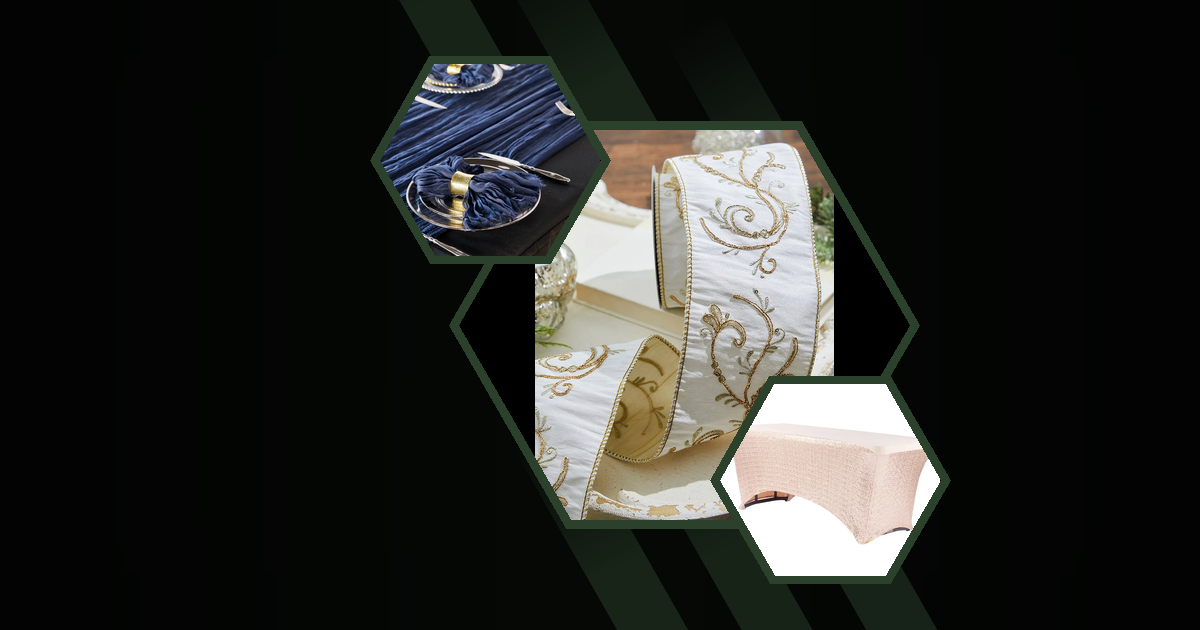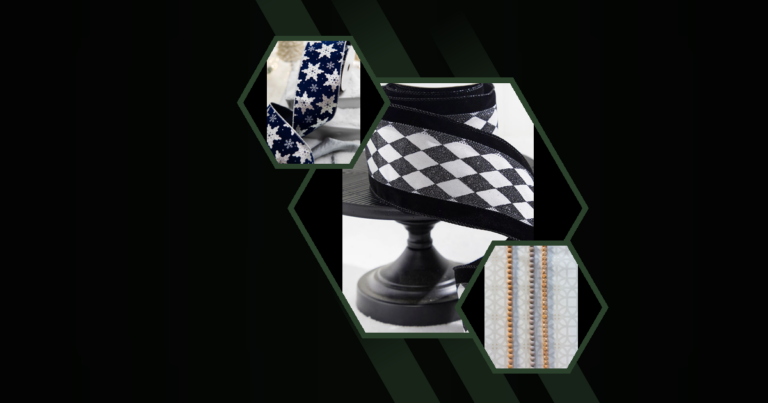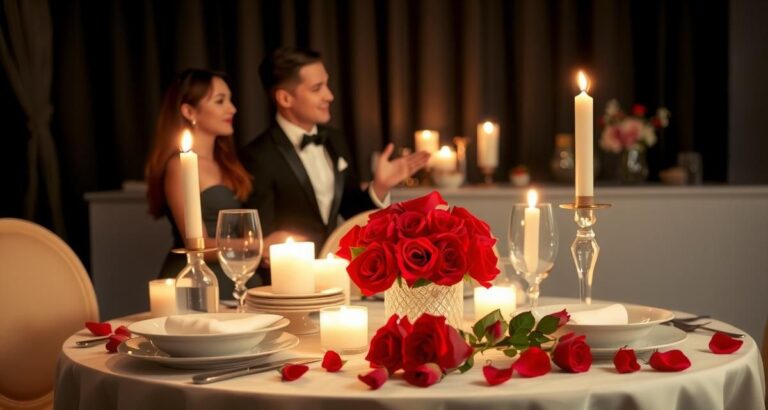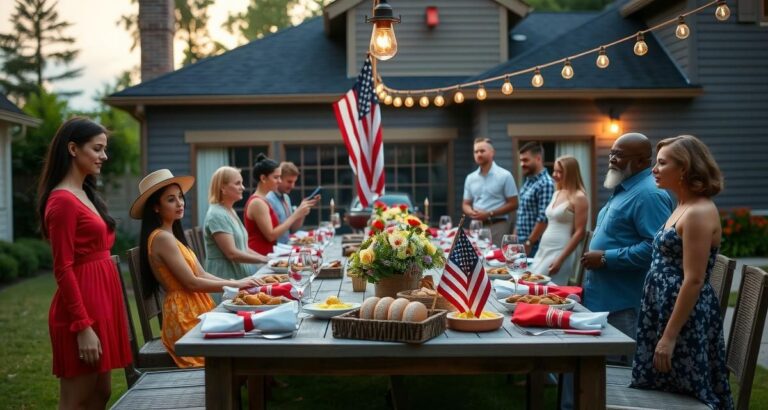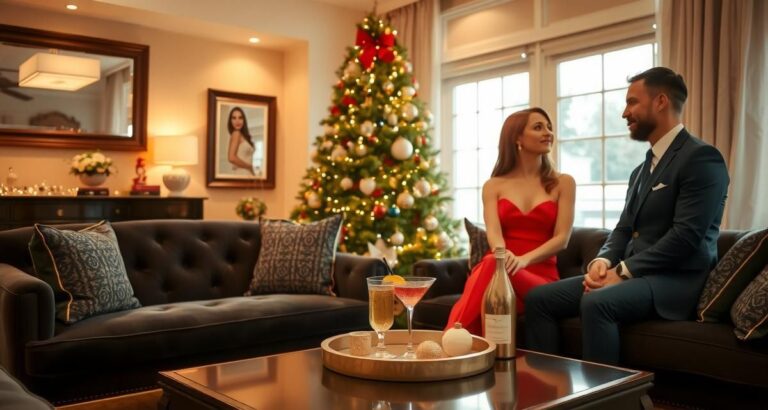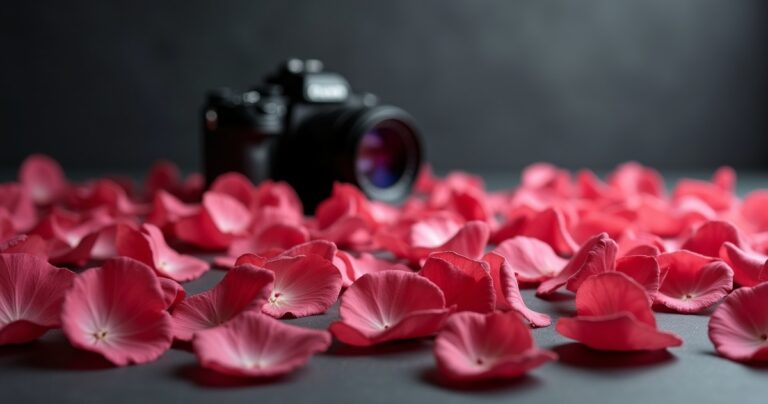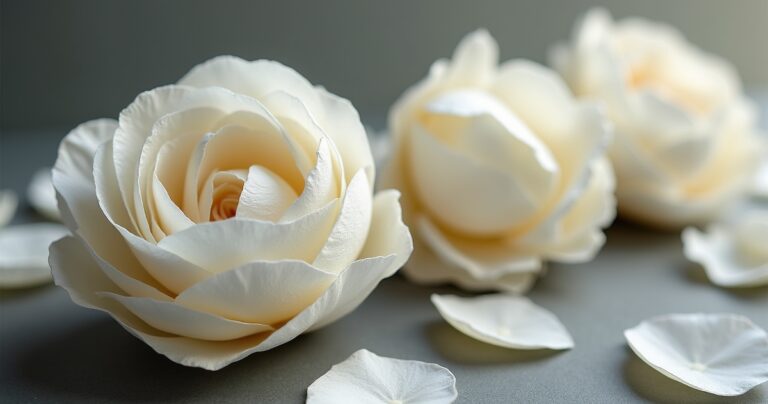Table Decor Layering Techniques for Stunning Tablescapes
Creating a stunning tablescape is an art form that can transform any event or dining experience. By mastering the techniques of layering table runners and overlays, you can elevate your table decor to new heights. Let’s explore some key strategies for achieving eye-catching results.
Combining Colors and Textures
When layering table runners and overlays, the interplay of colors and textures is crucial. Start by selecting a base color for your tablecloth, then add runners and overlays in complementary or contrasting hues. Consider the overall theme of your event and choose fabrics that enhance the atmosphere.
For example, a rustic wedding might feature a burlap tablecloth with a lace overlay and a silk runner. This combination creates a rich tapestry of textures that adds depth to your table setting.
- Pair smooth satin with rough linen for contrast
- Layer sheer fabrics over opaque ones for a delicate effect
- Use metallic accents to add sparkle and sophistication
Balancing Proportions and Sizes
Achieving the right balance in your table decor is essential for a polished look. Consider the size of your table when selecting runners and overlays. A general rule of thumb is to have your runner extend 6-12 inches over each end of the table, while overlays should drape 6-8 inches over the tablecloth’s edge.
According to event planner Sarah Thompson of Elan Bazaar, “The key to successful layering is proportion. You want each element to complement the others without overwhelming the overall design.”
- Use longer runners for rectangular tables
- Opt for circular overlays on round tables
- Experiment with asymmetrical placement for a modern twist
Creating Visual Interest with Patterns
Patterns can add excitement and personality to your table decor. When layering patterns, consider scale and theme. Mix large-scale patterns with smaller, more intricate designs for a balanced look. Alternatively, use a bold pattern as a focal point and surround it with solid colors.
| Pattern Type | Best Paired With | Effect |
| Floral | Solid colors or stripes | Romantic, garden-inspired |
| Geometric | Textured solids | Modern, sophisticated |
| Paisley | Solid jewel tones | Bohemian, eclectic |
How to Use Table Runners Effectively in Your Decor
Table runners are versatile decor elements that can dramatically change the look of your table. Understanding how to use them effectively is key to creating stunning tablescapes.
Choosing the Right Length and Width
The length and width of your table runner can significantly impact the overall aesthetic of your table. For a traditional look, choose a runner that hangs about 6 inches over each end of the table. For a more modern approach, try a shorter runner that doesn’t overhang the table edges.
Width is equally important. A runner should be wide enough to make a statement but not so wide that it covers the entire table. Typically, a width of 12-14 inches works well for most tables.
- Standard runner length: Table length + 12-24 inches
- Ideal runner width: 1/3 of the table width
- Consider custom sizes for unique table shapes
Positioning Runners for Maximum Impact
The placement of your table runner can create different visual effects. A centered runner is classic and elegant, while an off-center placement can add a contemporary flair. For round tables, try crisscrossing two runners to create a unique design.
“Experiment with different placements to find what works best for your event,” advises Jennifer Lee, a table styling expert at Elan Bazaar. “Sometimes, an unexpected runner position can become the highlight of your decor.”
- Center placement for traditional elegance
- Off-center for a modern, asymmetrical look
- Diagonal placement for dynamic visual interest
Layering Multiple Runners for Depth
For a truly luxurious look, consider layering multiple runners. This technique adds depth and complexity to your table decor. Start with a wider runner as your base, then layer narrower runners on top. Play with different textures and colors to create a rich, multidimensional effect.
- Layer contrasting colors for bold statements
- Use runners of varying widths for a tiered effect
- Incorporate sheer runners for subtle layering
Stylish Table Runner and Overlay Combinations
Creating stylish combinations of table runners and overlays can elevate your event decor from ordinary to extraordinary. Let’s explore some winning combinations that will impress your guests.
Complementary Color Pairings
Choosing complementary colors for your runners and overlays can create a harmonious and visually appealing tablescape. Consider using a color wheel to find perfect pairings. For example, pair a deep purple overlay with a golden yellow runner for a regal look.
- Navy blue overlay with coral runner for a nautical theme
- Emerald green overlay with blush pink runner for a garden party
- Charcoal gray overlay with mustard yellow runner for a modern aesthetic
Mixing Materials for Texture
Combining different materials adds depth and interest to your table decor. Mix smooth fabrics with textured ones to create a tactile experience for your guests. For instance, pair a sleek satin overlay with a nubby linen runner.
According to textile designer Maria Rodriguez, “The juxtaposition of different textures can make a table setting truly memorable. It’s all about creating contrast that pleases both the eye and the touch.”
- Velvet overlay with a sequined runner for glamorous events
- Burlap overlay with a silk runner for rustic-chic appeal
- Lace overlay with a cotton runner for vintage-inspired tables
Seasonal Combinations for Year-Round Appeal
Adapting your table decor to the seasons keeps your events fresh and relevant. Consider these seasonal combinations:
| Season | Overlay | Runner | Accent |
| Spring | Pastel linen | Floral print | Fresh flowers |
| Summer | White cotton | Striped nautical | Seashells |
| Fall | Burnt orange burlap | Plaid flannel | Mini pumpkins |
| Winter | Silver sequin | Faux fur | Pine cones |
Creative Table Dressing Ideas with Runners and Overlays
Thinking outside the box with your table dressing can lead to stunning and memorable tablescapes. Let’s explore some creative ideas that will set your event apart.
Asymmetrical Arrangements
Break away from traditional symmetry by creating asymmetrical arrangements with your runners and overlays. This modern approach adds visual interest and a sense of movement to your table.
- Place a runner diagonally across the table
- Use overlays of different lengths on each side
- Create a cascading effect with layered runners of varying widths
Cascading Overlays for Drama
For a truly dramatic effect, consider using cascading overlays. This technique involves draping fabric from the table edge to the floor, creating a waterfall-like effect.
Event stylist Lisa Chen notes, “Cascading overlays can transform a simple table into a work of art. They’re particularly effective for head tables at weddings or focal point tables at galas.”
- Use sheer fabrics for a ethereal look
- Incorporate ombre fabrics for a gradient effect
- Add fairy lights under the cascade for a magical glow
Incorporating Natural Elements
Bringing nature to your table can create a fresh and organic feel. Incorporate natural elements alongside your runners and overlays for a unique touch.
- Weave greenery garlands over table runners
- Use driftwood or branches as natural table runners
- Place potted herbs or succulents along fabric runners
Modern Techniques for Table Decor Layering
As event decor trends evolve, so do the techniques for layering table runners and overlays. Embrace these modern approaches to keep your tablescapes fresh and contemporary.
Minimalist Approaches to Layering
The minimalist aesthetic has gained popularity in recent years, influencing table decor trends. This approach focuses on clean lines, neutral colors, and purposeful simplicity.
- Use a single, high-quality runner as a focal point
- Opt for monochromatic layering with subtle texture variations
- Incorporate negative space for a clean, uncluttered look
Geometric Patterns and Shapes
Geometric designs add a modern edge to table decor. Incorporate these patterns through your choice of runners and overlays or by arranging them in geometric configurations.
“Geometric patterns can add a sophisticated, architectural element to your tablescape,” says interior designer Mark Johnson. “They work particularly well for corporate events or modern weddings.”
- Layer diamond-shaped overlays for a dynamic look
- Use runners with bold, graphic prints
- Arrange multiple narrow runners in parallel lines
Incorporating Metallic Accents
Metallic elements can add glamour and sophistication to your table decor. Whether through shimmering fabrics or metallic-printed designs, these accents catch the light and create visual interest.
- Layer a sequined runner over a matte overlay
- Use runners with metallic thread woven throughout
- Incorporate rose gold or copper tones for a trendy touch
Layered Table Styling for Special Occasions
Special occasions call for extraordinary table decor. Layering table runners and overlays can help create memorable tablescapes for various events.
Wedding Reception Table Ideas
Wedding receptions offer a perfect opportunity to showcase elegant layered table decor. Consider these ideas:
- Use lace overlays on satin tablecloths for a romantic look
- Layer runners in the wedding colors for a cohesive theme
- Incorporate personalized runners with the couple’s monogram
Holiday Table Layering Techniques
Holiday tables can be transformed with festive layering techniques:
- Layer plaid runners over solid-colored tablecloths for Christmas
- Use metallic overlays with autumn-hued runners for Thanksgiving
- Incorporate pastel layers with floral accents for Easter
Corporate Event Table Decor
Corporate events require a professional yet stylish approach to table decor:
- Use company colors in your layering scheme
- Incorporate sleek, modern materials like acrylic or metallic fabrics
- Layer neutral tones for a sophisticated, understated look
Table Overlays and Runner Styling Tips for Different Table Shapes
Different table shapes require unique approaches to styling with overlays and runners. Let’s explore some tips for common table shapes.
Round Table Layering Strategies
Round tables present a unique challenge for layering. Consider these strategies:
- Use circular overlays that drape evenly around the table
- Cross runners to create a star-like pattern
- Layer multiple round overlays of decreasing sizes for a tiered effect
Rectangular Table Runner Placement
Rectangular tables offer versatility in runner placement:
- Traditional centered runner
- Multiple runners placed width-wise for a striped effect
- Asymmetrical placement for a modern look
Square Table Overlay Ideas
Square tables allow for creative overlay arrangements:
- Diagonal runner placement for dynamic visual interest
- Layered square overlays rotated at different angles
- Corner-to-corner runner placement for a diamond effect
Choosing the Right Fabrics for Table Runners and Overlays
The choice of fabric can make or break your table decor. Consider the event type, season, and practical needs when selecting materials.
Durable Materials for Outdoor Events
Outdoor events require fabrics that can withstand the elements:
- Polyester blends for wrinkle-resistance and durability
- Treated cotton for water-resistance
- Sunbrella fabric for fade-resistant color
Luxurious Fabrics for Formal Occasions
Formal events call for high-end fabrics that exude elegance:
- Silk for a lustrous sheen
- Velvet for rich texture
- Organza for a delicate, ethereal look
Easy-Care Options for Everyday Use
For frequent use, choose fabrics that are easy to maintain:
- Cotton-polyester blends for easy washing
- Microfiber for stain resistance
- Linen-look polyester for a natural appearance with easy care
Color Theory in Table Decor Layering
Understanding color theory can help you create harmonious and impactful table decor. Let’s explore some color-based layering techniques.
Monochromatic Layering Techniques
Monochromatic color schemes use variations of a single color for a sophisticated look:
- Layer different shades of blue for a coastal theme
- Use various tones of green for a fresh, natural feel
- Combine white, ivory, and cream for an elegant, classic appearance
Complementary Color Schemes
Complementary colors sit opposite each other on the color wheel and create vibrant contrasts:
- Pair purple overlays with yellow runners for a regal look
- Combine blue and orange for a bold, energetic table
- Use red and green for traditional holiday decor
Using Color to Set the Mood
Colors can significantly influence the atmosphere of your event:
- Cool blues and greens for a calm, relaxing ambiance
- Warm reds and oranges for an energetic, lively feel
- Neutral tones for a sophisticated, understated mood
Incorporating Texture in Table Runner and Overlay Combinations
Texture adds depth and interest to your table decor. Here’s how to effectively incorporate texture in your layering:
Mixing Smooth and Textured Fabrics
Combining smooth and textured fabrics creates visual and tactile contrast:
- Layer a nubby linen runner over a smooth satin tablecloth
- Pair a sequined overlay with a matte runner
- Combine a velvet runner with a crisp cotton overlay
Adding Dimension with Embellishments
Embellishments can add extra texture and sparkle to your table decor:
- Use runners with beaded or sequined edges
- Incorporate lace overlays for delicate texture
- Add tassels or fringe to table runners for movement
Layering Different Weaves and Patterns
Mixing weaves and patterns can create a rich, layered look:
- Combine a herringbone weave runner with a floral print overlay
- Layer a chunky knit runner over a fine silk tablecloth
- Use a jacquard overlay with a simple linen runner
By mastering these techniques for layering table runners and overlays, you can create stunning tablescapes for any occasion. Remember to consider the event type, venue, and overall theme when selecting your combinations. With creativity and attention to detail, your table decor will surely impress and delight your guests.
FAQs
How do you layer a table runner?
Layering a table runner is a simple yet effective way to enhance your table decor. Begin by placing your base tablecloth or leaving the table bare for a more casual look. Next, center your runner down the middle of the table, ensuring equal overhang on both ends. For added depth, consider layering a second, narrower runner on top, either centered or slightly off-center for a modern twist.
What goes on first table runner or tablecloth?
Traditionally, the tablecloth goes on first, followed by the table runner. This order provides a clean base and allows the runner to stand out as a decorative element. However, modern styling sometimes reverses this order for a unique look. Experiment with both approaches to see which best suits your event’s aesthetic and theme.
How do you use multiple table runners?
Using multiple table runners can create a rich, layered look for your table. One popular method is to crisscross runners, forming an ‘X’ shape on the table. Alternatively, place runners side by side for a striped effect, or layer them with the widest on the bottom and narrowest on top. Don’t be afraid to mix colors, textures, and lengths for a dynamic tablescape.
What are the benefits of layering table decorations?
Layering table decorations offers numerous benefits. It adds visual depth and interest to your tablescape, creating a more engaging dining experience. Layering also allows for greater creativity in color and texture combinations, helping to reinforce your event’s theme or color scheme. Additionally, it provides practical benefits such as protecting table surfaces and offering more options for placing centerpieces and table settings.

